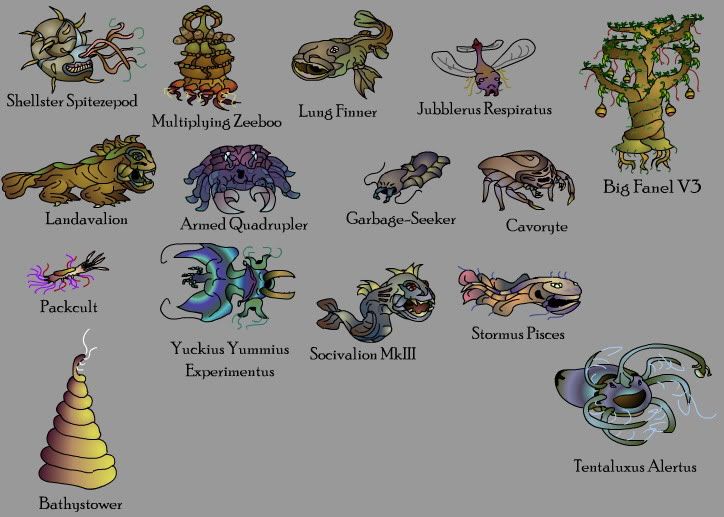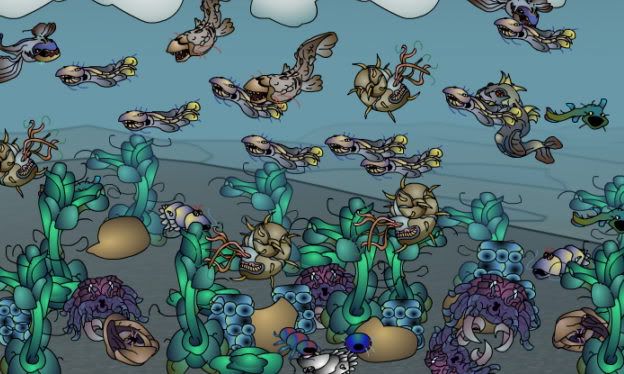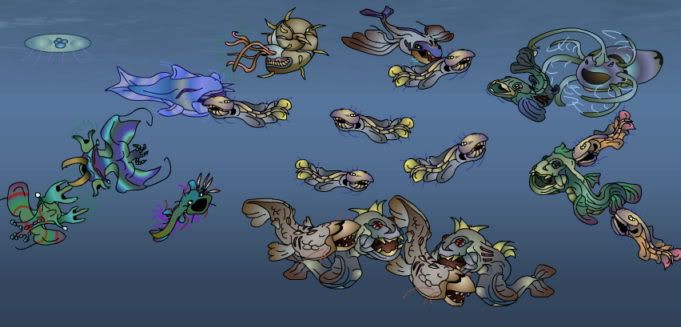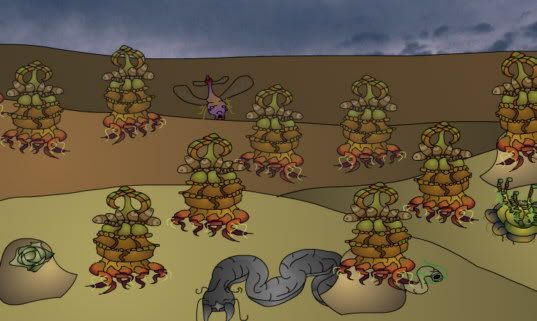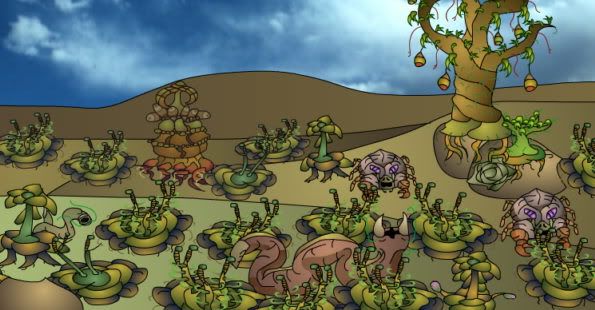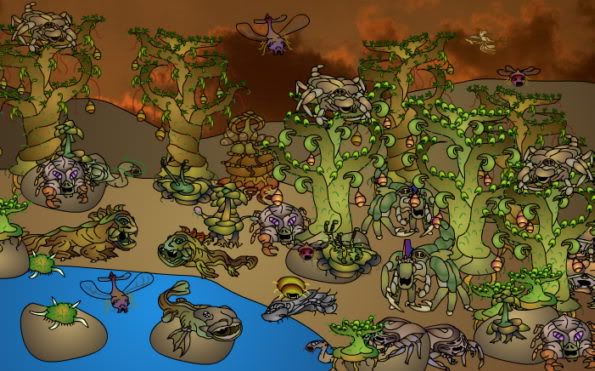Abaddon
Deity
Anyone supmitting names such as :Blue Fish II, will be systematically out evolved by me. I will chose your branch, and destory it 


What do you think of mine?People should be chastized more for not inventing better names...
I suspected as much, given your enthusiasm for the game.Just remember to realize that I'm quite the opposite of a young earth creationist...
Well, I might somewhat agree, but (1) there is such thing as freedom of speech, and (2) boring names add variety from other good names. After all, I'd hate to be known as a naked mole rat...



Fangster, Jawster, Huntrex, Deathrex, Stalkrex, Stealthrex, Scuteryte, Esturyte, Ponduryte, Geluryte, Respiryte, Scensuryte, Venatoryte, and Cavoryte are all species created by me.Which ones are yours? (sorry!)
Vague recollection of velorites or something? if so
If your the red/blue/greenhunter guy... :deathtoyouall:
You seem to have adopted the naming schemes of my earlier evolutions. Fangsters, which led to my -rex evolution path, evolved into Spikesters, then Shellsters and your guys.hate to bring up the now-old off-topic, but the main reason I have black is sometimes I check the forum at night after I come home from work, and my wife is asleep or trying to sleep. The black screen on a low-light monitor display setting keeps it from being too bright for her. I had not even thought about my screen color choice being seen when I did posted that.
----
Hope my names are okay. And if not, soon shellster might not be a name anymore, unless it survives past its future evolutions
I use latinesque names for my Arthropods.Well, I was going to go all scientific on everyone and use Latin names, but a quick glance at what everyone else was using convinced me otherwise.
Fangster, Jawster, Huntrex, Deathrex, Stalkrex, Stealthrex, Scuteryte, Esturyte, Ponduryte, Geluryte, Respiryte, Scensuryte, Venatoryte, and Cavoryte are all species created by me.
You seem to have adopted the naming schemes of my earlier evolutions. Fangsters, which led to my -rex evolution path, evolved into Spikesters, then Shellsters and your guys.
I use latinesque names for my Arthropods.
Yes, you definitely filled a new niche. Willing to disclose anything about your future plans?I mostly tried to make names psuedo scientific. Shellster as a genus isn't very fancy but it worked, and the species names I try to find something that will work. Using either bastardized versions of a translated word or adding some scientific prefixes/suffixes to change the name. Flutuan was a change from the Italian word for float (according to babelfish), and then I added -pod when it gained tentacles since it was a reference to a foot like apendege.
When I joined, I looked for something that wasn't being evolved by others yet, and create something different. It is interesting to see my latest evolution is closely related to the -rex line compared to say the cloudfish.
I have a goal as to what I want my line to eventually become, but I also want to try other things too. So for now I mostly try to make my line a good survivalist so that I can leave it alone an era or two so that I can work on something else.
Besides that, you didn't change any genes relating to transportation. Keep in mind that I will do anything to prevent the end of the predatory -yte lineage at the hands of anyone other than myself.Evolution Template:
Nekes: Nuclear Kid
Evolved from: Venatoryte
Gene added (max 2): Fangs, jaws
Gene removed: None
Description (optional): Evolved from the Venatoryte, it is now a "walking" species (walks more than crawls). It is very preditorial, and will eat anything it finds, whether animal, plant or dead
 Nonetheless, I appreciate the competition.
Nonetheless, I appreciate the competition.Lord_Iggy said:Yes, you definitely filled a new niche. Willing to disclose anything about your future plans?
 I have not gone through any of the past neslife attempts so I was unaware of it's previous use. I will have to make it devious or something.
I have not gone through any of the past neslife attempts so I was unaware of it's previous use. I will have to make it devious or something.